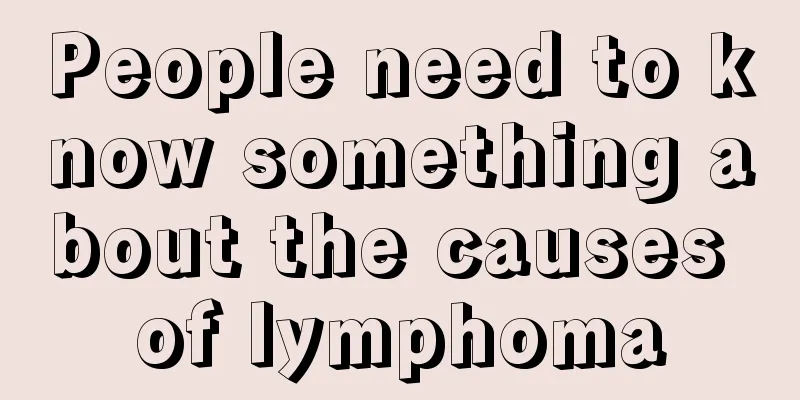Body metabolic cycle

|
Our body is made up of countless cells, and each cell is constantly metabolizing to ensure the normal functioning of our body. The body's metabolic cycles are not all the same. The metabolic cycles of different parts are different. Understanding these time points will help us better maintain our health. So, what is the body's metabolic cycle? Let's take a look below. 1. Liver renewal cycle: 6 months It is well known that the liver has an amazing ability to repair and regenerate itself due to its abundant blood supply. This means its important job of flushing toxins out of the body can continue. If you've ever wondered why even alcoholics sometimes have improved liver function, it's because liver cells only have a lifespan of about 150 days. "I can remove 70% of a patient's liver in one operation, and in just two months about 90% of the liver will grow back," explains David Lloyd, a liver surgeon at Leicester Royal Infirmary in the UK. However, in alcoholics, the parenchyma cells (the main cells of the liver) may gradually become damaged, forming scar tissue, also known as cirrhosis. Thus, while a healthy liver can continually renew itself, the damage from cirrhosis is permanent and sometimes fatal. 2. Taste bud renewal cycle: 10 days Professor Damien Vermuslay, scientific adviser to the British Dental Association, explained that there are about 9,000 taste buds on the tongue that help us detect sweet, salty, bitter or sour tastes. The taste buds themselves are collections of cells on the surface of the tongue, each containing about 50 taste cells. Taste buds generally only take 10 days to 2 weeks to renew themselves. However, anything that causes inflammation, such as infection or smoking, can damage taste buds, affecting their turnover and reducing their sensitivity. 3. The brain's renewal cycle: the same as your life span John Wadley, a neurosurgeon at Barts and London Hospital in the UK, points out that most of the cells that can last a lifetime are found in the brain. "We have about 100 billion brain cells, a fixed number at birth, and most of our brains don't renew themselves as we age," says Wadley. In fact, we do lose cells, which is the root cause of dementia and why head injuries are so devastating. "But there are two places in the brain where cells renew themselves: the olfactory bulb, which controls our sense of smell, and the hippocampus, which is used for learning," Wadley said. 4. Heart renewal cycle: 20 years It was previously believed that the heart was unable to renew itself. However, a study from the New York Medical College found that the heart is filled with stem cells that constantly renew themselves, at least 2 to 3 times during a lifetime. 5. Lung renewal cycle: 2 to 3 weeks Keith Prowse, deputy chairman of the British Lung Foundation, explained that lung cells are constantly renewing themselves. However, the lungs have different cells that renew at different rates. The cells of the alveoli, or air sacs, deep in the lungs that exchange oxygen and gases are replaced in a steady process that takes about a year. At the same time, the cells lining the lungs must renew themselves every two to three weeks. “They’re the lung’s first line of defense, so they have to be replaced quickly,” Dr. Ploss says. Emphysema prevents this renewal because the disease results from the destruction of the air bubbles, creating permanent “holes” in the lung walls. 6. Eye renewal cycle: the same as your life span The eyes are one of the few parts of the body that do not change during your lifetime. The only part of the eye that is constantly renewed is the cornea. Rob Hogan, president of the British College of Optometrists, said that if the cornea is damaged it can recover within 24 hours. "The cornea has to have a smooth surface to focus light well, and that's why this cell turnover is so rapid," Hogan says. Unfortunately, the same can't be said for the rest of the eye, and as we age, the lens loses its elasticity, which is why our vision deteriorates as we age. 7. Skin renewal cycle: 28 days The top layer of your skin renews itself every 2 to 4 weeks. This rapid turnover is because the skin is the outer layer of protection of the body and it is easily exposed to damage and pollution. Although our skin is constantly being renewed, we still develop wrinkles as we age. That's because as we age our skin loses collagen and elasticity. Epithelial cells are very active cells in the human body, they are constantly dying and growing. If you don’t bathe regularly, you will feel “mud” on your skin. This “mud” is actually the “corpses” of apoptotic epithelial cells. 8. Bone renewal cycle: 10 years Peter Seby, an osteoporosis expert at the Manchester Royal Infirmary in the UK, explained that bones are constantly renewing themselves. It will take 10 years to complete this update. Osteoclasts break down old bone, while osteoblasts are responsible for creating new bone tissue. Because the body's renewal rates are different, old bones and new bones always exist at the same time. After middle age, bone renewal slows down, so our bones tend to become thinner, which is why osteoporosis develops. 9. Intestinal renewal cycle: 2 to 3 days The intestines are covered with villi, which are small finger-like tentacles that increase the surface area and help the intestine absorb nutrients. They are renewed extremely quickly, every two to three days, explained Tom MacDonald, professor of immunology at Bart's and the London Hospital. This is because they are often exposed to chemicals such as highly corrosive stomach acid that breaks down food, so they usually suffer. The rest of the intestine is protected by a layer of mucus, although this barrier cannot keep out stomach acid for long, so the cells in these areas renew themselves every three to five days. 10. Nail renewal cycle: 6 to 10 months Nails are made up of cells rich in keratin. Fingernails grow 3.4 millimeters per month, about twice as fast as toenails. It takes 10 months for a toenail to grow completely, but only 6 months for a fingernail to grow completely. This may be because they have a better blood supply and therefore better circulation. Young people and men have faster nail growth, probably because they have better circulation. Oddly, the pinky finger nail grows much slower than the nails on the other fingers, but it's not clear why. In general, nail growth rate is also related to age and diseases, such as psoriasis, which can affect the tissue from which the nail grows. 11. Red blood cell renewal cycle: 4 months Red blood cells are an important transport system for the body, carrying oxygen to liver tissue and removing waste products. They are renewed every four months, and when the liver excretes the iron necessary for the remaining healthy red blood cells, the remaining cells in the spleen will be destroyed. Because the body is damaged by injuries and, in women, menstruation, it often synthesizes more red blood cells. The life cycle is 80-120 days, and 300 million red blood cells die every day, while the same number of red blood cells grow. Red blood cells do not have a nucleus, so they cannot divide. Their growth comes from the division of hematopoietic stem cells in the bone marrow. Red blood cells are carriers of oxygen and carbon dioxide. Anemia is caused by a deficiency of red blood cells. 12. Hair renewal cycle: 3 to 6 years Hair restoration expert Dr Bessam Faga explains that the lifespan of hair depends on its length, but typically hair grows about 1 cm per month. Each hair of a woman can take up to 6 years to grow, while a man's hair can take up to 3 years to grow. Eyebrows and eyelashes are renewed every 6 to 8 weeks, but frequent eyebrow plucking can cause eyebrow growth to stop because plucking disrupts this cycle. 13. White blood cell renewal cycle: 13-20 days. It also grows from the division of bone marrow stem cells. When the body is attacked by viruses or bacteria and inflammation occurs, the division rate of white blood cells increases. When we do a blood test and the white blood cell count increases, the doctor will tell you that there is inflammation. Leukemia is caused by the endless production of white blood cells by white blood cell stem cells, which destroys the structure of the blood and affects the balance of various systems in the human body. AIDS is caused by the HIV virus attacking white blood cells, destroying the body's defense system and making the body unable to resist foreign viruses or bacteria. |
<<: Why are there horizontal lines on the neck
>>: How to make yourself go to bed early_How to make yourself go to bed early
Recommend
How is spinal muscular weakness diagnosed?
Spinal muscular weakness is a relatively common d...
Why are crabs bitter
Some people feel that the crabs they bought are n...
Don’t rush to take medicine if you have bloating in your stomach. Eat more of this thing for better results!
Stomach bloating is a very common disease in our ...
What causes skin soft fibroma
The causes of skin soft fibroma mainly include ge...
The difference between allergies and acne
People nowadays have serious skin problems becaus...
What should I do if my throat hurts when I swallow saliva
The throat hurts whenever you swallow saliva, so ...
The efficacy of ammonia cream_The efficacy and function of ammonia cream
Ammonia cream is not an oral medicine, but an ext...
What causes weak legs
For those who do not exercise enough on a daily b...
Early symptoms of lymphoma
Lymphoma is a malignant tumor originating from th...
How long can a person with esophageal cancer usually live
The survival time of esophageal cancer varies gre...
Should I take selenium yeast tablets before or after meals? Which is the correct way?
Selenium yeast tablets are a selenium supplement ...
The effect of onion soaked in dry red wine
Maybe many people have not tried to use onions to...
Is it ok to apply alcohol to the itchy ear
Summer has passed and autumn is upon us. Autumn i...
What kind of underwear should I wear for my breast shape?
For women, each woman's breast shape is diffe...
What fruit is the best for the brain?
The development of intelligence always attracts p...









